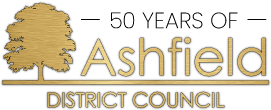Supplementary planning documents and guidance
Supplementary planning documents (SPDs) provide more detailed advice or guidance on how policies in the Local Plan should be implemented. However, they do not form part of the Local Plan and they cannot introduce new planning policies into the Local Plan.
When a decision is made on a planning application an SPD is a material consideration, that is a matter that should be taken into account in deciding the planning application or an appeal against a planning decision.
Supplementary planning documents
We use the supplementary planning documents set out below to help make decisions on planning applications.
Guide for Converting Shops to Residential Supplementary Planning Documents
The Guide for Converting Shops to Residential SPD was adopted at cabinet on the 21 January 2019 and will be taken into account as a material consideration in the planning process. The SPD has been prepared to help ensure high quality conversions are achieved in the district.
It sets out where a conversion may be appropriate and where it will not, and highlights issues that Planning and Building Control teams look for when considering an application.
You can find the guide, the adoption statement, the consultation statement and the SEA screening documentation statement in the related documents section of this page.
Residential Development Guidelines Supplementary Planning Documents
In order to help achieve high quality design in residential development and house extensions we have produced Supplementary Planning Documents (SPD) for residential design and residential extension design. You can find them in the related documents section of this page.
The Residential Car Parking Standards SPD has been prepared to provide guidance to applicants and developers. The SPD sets out our requirement for parking provision in new residential developments. It updates and replaces residential parking standards contained within the Ashfield Local Plan Review (2002).
Planning guidance
The following provides planning guidance in relation to the submission of planning applications.
Climate change
New development should positively contributes to carbon reduction. For planning applications this means that:
- Proposals for development should demonstrate an ambitious approach to the use of renewable energy, sustainable design and construction methods, with a high level of energy efficiency in new buildings
- The measures set out in the planning guidance will need to be integrated into the design and layout of development within Ashfield, as climate change adaptation and mitigation will be considered in all development decisions
- Applicants for planning permission should demonstrate how they have met the requirements set out in this planning guidance.
We have provided a guidance document including a checklist:
Biodiversity and nature conservation
The main purpose of this guidance is to assist planning applicants and developers to understand the importance of nature, and how development can help deliver biodiversity improvements and net gains. It includes:
• Biodiversity information required when submitting a planning application
• How to apply the mitigation hierarchy to all development proposals
• How to assess Biodiversity Net Gain (BGN) where required
• Examples of how to integrate biodiversity into developments
• A step by step guide to biodiversity and the planning application process
• Checklists to assist applicants in demonstrating full consideration in their submission
The guidance explains how we will aim to secure proportionate and appropriate biodiversity net gain in the determination of planning applications, and provides guidance on how to plan for biodiversity and nature conservation. It brings together local, and national policy and good practice to illustrate practical interventions as part of the development management process.
